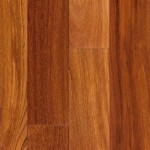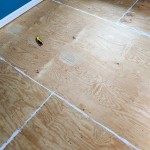How to Remove Sticky Adhesive From Hardwood Floors
Hardwood floors, prized for their beauty and durability, can unfortunately fall victim to sticky adhesive residue. This can stem from a variety of sources, including removed carpets, misplaced tape, dropped glues, or even spilled household products. Removing this adhesive requires patience and the application of appropriate techniques to avoid damaging the delicate wood surface. The success of the removal process hinges on identifying the type of adhesive, testing removal methods in an inconspicuous area, and utilizing the gentlest effective approach.
Before commencing any removal process, it is crucial to ascertain the type of adhesive present. Different adhesives possess varying chemical compositions, influencing the effectiveness of specific removal methods. Construction adhesives, often used for carpet installation, may require stronger solvents than residue left by masking tape. Unknown adhesive types necessitate a process of elimination, starting with the least aggressive methods and gradually increasing the intensity as needed.
The immediate environment surrounding the adhesive should also be considered. Factors such as humidity and temperature can affect the adhesive's consistency and its bond to the floor. Ensuring adequate ventilation is vital when using solvents, and protecting nearby surfaces from potential spills or splatters is a preventive measure worth taking.
Identifying the Adhesive Type
Pinpointing the type of adhesive is the first and often most challenging step in the removal process. While visual inspection may offer clues, it is not always definitive. For instance, a thick, yellowish residue might suggest construction adhesive, while a thin, clear layer could indicate residue from tape or a light-duty adhesive. The texture and feel of the residue can also provide hints. A brittle, hardened adhesive may respond differently to removal methods than a soft, pliable one.
If the source of the adhesive is known (e.g., carpet glue after carpet removal), the product label or manufacturer's information can provide valuable insights into the adhesive's composition and recommended removal techniques. Consulting online resources or adhesive removal guides specific to the identified product can further refine the approach.
In cases where the adhesive type remains unknown, a process of elimination is necessary. This involves testing various removal methods, starting with the gentlest options and gradually progressing to more aggressive solvents, while carefully monitoring the hardwood floor for any signs of damage or discoloration. Documenting the effectiveness of each method can help narrow down the possibilities and ultimately lead to the most suitable solution.
Gentle Removal Methods
Prioritizing gentle removal methods is essential to preserving the integrity of the hardwood floor. Harsh chemicals and abrasive tools can easily scratch the finish or even damage the wood itself. Therefore, it is always recommended to start with the least aggressive approaches and only escalate to stronger methods if necessary.
One of the simplest and often effective methods is applying heat. A hairdryer or heat gun (used on a low setting and held at a safe distance) can soften the adhesive, making it easier to scrape away. It is crucial to avoid overheating the adhesive or the wood, as excessive heat can damage the finish or even warp the wood. A plastic scraper or putty knife should be used to gently lift the softened adhesive, working carefully and avoiding applying excessive pressure.
Another gentle method involves using warm water and dish soap. A solution of warm water and mild dish soap can sometimes dissolve or soften the adhesive. Apply the solution to the residue, let it sit for a few minutes to penetrate, and then gently wipe away with a soft cloth or sponge. Avoid saturating the wood with water, as excessive moisture can cause warping or staining. It's important to dry the area thoroughly after cleaning.
Household items such as baking soda and vinegar can also be used as mild adhesive removers. A paste of baking soda and water can be applied to the adhesive, allowed to sit for a few minutes, and then gently scrubbed away. Vinegar, either diluted with water or used undiluted, can also help dissolve certain types of adhesive. Again, it's crucial to test these methods in an inconspicuous area first to ensure they do not damage the finish.
For adhesives that are particularly resistant to heat and water, consider trying a citrus-based cleaner. These cleaners contain natural solvents that can effectively dissolve adhesives without being overly aggressive. However, it is still essential to test the cleaner in an inconspicuous area before applying it to the entire affected surface, as some citrus-based cleaners can potentially strip the floor's finish.
Using Solvents and Chemical Removers
When gentle methods prove ineffective, stronger solvents or chemical removers may be necessary. However, these products should be used with caution, as they can potentially damage the hardwood floor's finish or even the wood itself. Always wear appropriate protective gear, such as gloves and eye protection, and ensure adequate ventilation when working with solvents.
Mineral spirits, also known as paint thinner, is a relatively mild solvent that can be effective for removing certain types of adhesive. Apply a small amount of mineral spirits to a clean cloth and gently rub the adhesive residue. Avoid pouring the mineral spirits directly onto the floor. Work in small sections and frequently change the cloth to prevent spreading the adhesive. Once the adhesive is removed, clean the area with a mild soap and water solution to remove any remaining solvent residue.
Acetone, a stronger solvent commonly found in nail polish remover, can be used for more stubborn adhesives. However, acetone is a powerful solvent that can quickly damage the finish of hardwood floors, so it should be used with extreme caution. Always test acetone in an inconspicuous area first and apply it sparingly with a cotton swab or clean cloth. Wipe away the residue immediately and clean the area thoroughly with soap and water.
Commercial adhesive removers are specifically formulated to dissolve various types of adhesives. These products often contain a blend of solvents and other ingredients designed to break down the adhesive bond. When using a commercial adhesive remover, carefully follow the manufacturer's instructions and always test the product in an inconspicuous area first. Some adhesive removers may require a dwell time to allow the solvent to penetrate the adhesive, while others may require immediate wiping. Be sure to choose a product that is specifically labeled as safe for use on hardwood floors.
For particularly stubborn or thick adhesive residue, consider using a gel-based adhesive remover. These products are designed to stay in place and penetrate the adhesive over a longer period, making them more effective for removing difficult residues. Apply the gel-based remover to the adhesive and allow it to sit for the recommended dwell time, following the manufacturer's instructions. Then, scrape away the softened adhesive with a plastic scraper or putty knife and clean the area thoroughly with soap and water.
After using any solvent or chemical remover, it's crucial to neutralize the area to prevent further damage to the hardwood floor. This can be done by cleaning the area with a solution of water and vinegar or a specialized neutralizing agent. Follow up with a thorough cleaning using a mild soap and water solution to remove any remaining residue and restore the floor's natural luster.
Remember that any of these more aggressive methods can potentially damage the finish of your hardwood floors, so it is always best to test in an inconspicuous area first.
Post-Removal Care and Prevention
After successfully removing the sticky adhesive, proper post-removal care is essential to restore the beauty and protect the integrity of the hardwood floor. This includes cleaning the area, repairing any damage to the finish, and implementing preventive measures to minimize the risk of future adhesive mishaps.
Immediately after removing the adhesive, clean the affected area with a mild soap and water solution to remove any remaining residue. Use a soft cloth or sponge to avoid scratching the surface. Dry the area thoroughly with a clean towel or cloth to prevent water damage. If necessary, use a fan to circulate air and expedite the drying process.
Inspect the area for any signs of damage to the finish, such as scratches, dullness, or discoloration. If the finish is damaged, it may be necessary to touch up or refinish the affected area. Small scratches can often be repaired with a touch-up marker or stain that matches the color of the floor. Deeper scratches or more extensive damage may require sanding and refinishing the area.
To prevent future adhesive problems, take precautions to protect the hardwood floor from spills and sticky substances. Use rugs or mats in high-traffic areas and under furniture to protect the finish from scratches and wear. Clean up spills immediately to prevent them from drying and becoming sticky. When using tape or adhesives on the floor, choose products that are specifically designed for use on hardwood surfaces and that leave minimal residue. Consider using adhesive alternatives, such as non-slip pads or furniture protectors, to avoid the need for sticky substances altogether.
Regular cleaning and maintenance can also help prevent adhesive buildup and maintain the beauty of the hardwood floor. Sweep or vacuum the floor regularly to remove dust and debris. Occasionally, clean the floor with a hardwood floor cleaner specifically designed for the type of finish on your floor. Avoid using harsh chemicals or abrasive cleaners, as these can damage the finish. By following these simple steps, it can help keep the hardwood floor looking its best for years to come.

Removing Glue Or Adhesive From Hardwood Floors The Speckled Goat

How To Remove Glue From Wood Floors Pete S

Removing Glue Or Adhesive From Hardwood Floors The Speckled Goat

4 Ways To Remove Adhesive From A Hardwood Floor Wikihow

4 Ways To Remove Adhesive From A Hardwood Floor Wikihow

Removing Glue Tar Paper From Hardwood Floors Farmhouse Restoration Day In The Life

Removing Glue Or Adhesive From Hardwood Floors The Speckled Goat

4 Ways To Remove Adhesive From A Hardwood Floor Wikihow

How To Remove Glue From Wood Floors Pete S

Removing Glue Or Adhesive From Hardwood Floors The Speckled Goat
See Also







